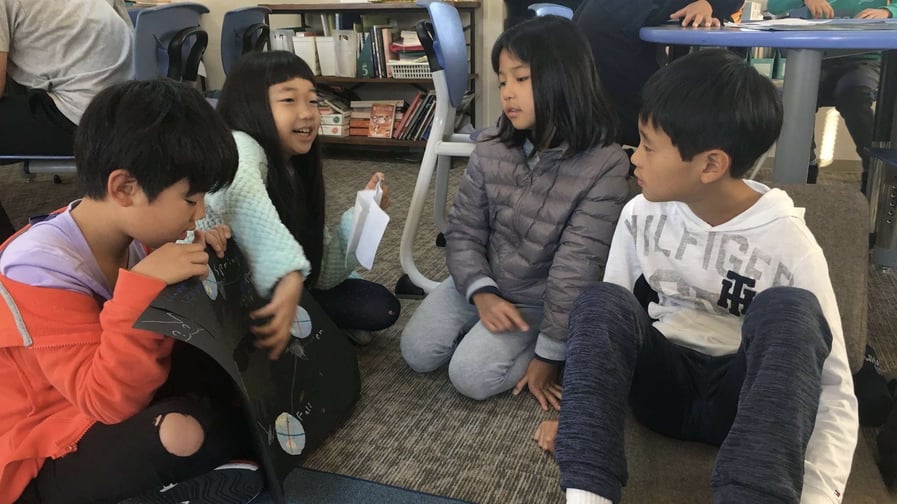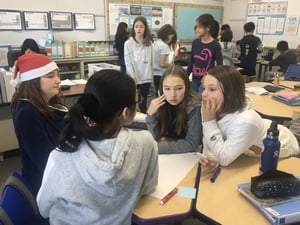
Walk around the halls at NIS at any given time, and you will see the relationship that exists between students, their learning, and their physical space. The impact of space on learning may not be immediately obvious - but have you ever wondered how different it feels for a first grader to curl up in a bean-bag with a book than to be sitting upright at a desk learning to read? Did you ever think how much more cool and ‘real’ it feels for a middle schooler to collaborate with friends in a breakout space rather than sitting at their desks in the classroom? Or how much more authentic it is for a Grade 12 student to explain their artwork in an exhibition space, rather than hanging on the wall of the art room.
The traditional model of a teacher standing at the front of a class as a focus for learning still has a central role to play and, of course, at NIS you will see this often. But the key difference between our school and the schools that our children’s parents and grandparents attended is that it is not the ONLY thing you will see.
Students may be at their desks listening to the teacher, but they are just as likely to be using classroom furniture in flexible ways to engage as a collaborative class community. You may see them losing the furniture altogether, sitting on the floor or standing in groups or teams to explore the concepts and ideas being learned. Other times, the children are spilling out into the hallway with paper, pens, or devices ready to tackle the task before them. In the school of their parents and grandparents teachers were told to make the learning fit around the furniture. At NIS, we make the furniture fit the learning!
The Importance of Collaboration
What happens daily at NIS is called collaborative learning, where students capitalize on each other's ideas and skills to deepen understanding or create something from their collective activity. Research and practical experience have shown that learning that is interactive, social, and student-led results in deeper understanding and higher retention. 
We know that the human brain needs time for individual processing and reflection but that authentic conceptual and skills-based learning can only be generated from within a social context which mirrors the authentic interactions of the real world. Such learning will:
- Develop higher contextual knowledge and understanding of how these concepts apply to the real world
- Create capacity and confidence in approaches to learning and trans-disciplinary skills such as verbal communication, self-management, autonomous learning and risk assessment
- Develop the dispositions essential to success in life such as self-confidence, self-worth, empathy, responsibility and leadership
- Develop a mindset of international mindedness and global citizenships by creating a context in which diverse perspectives are valued, challenged and learned from
- Be fun, creative and inspiring and in so, cultivate a lifelong love of learning
At NIS, we can see on a daily basis how learning together in a collaborative way changes our students’ ways of thinking and analyzing. It is the basis of our mission to Inquire, Inspire, and Impact and it is having real world consequences that we are proud to foster and develop. You can read more about how this design concept has been incorporated into the new East Building, the latest edition to the NIS campus, open for the 20-21 school year.




